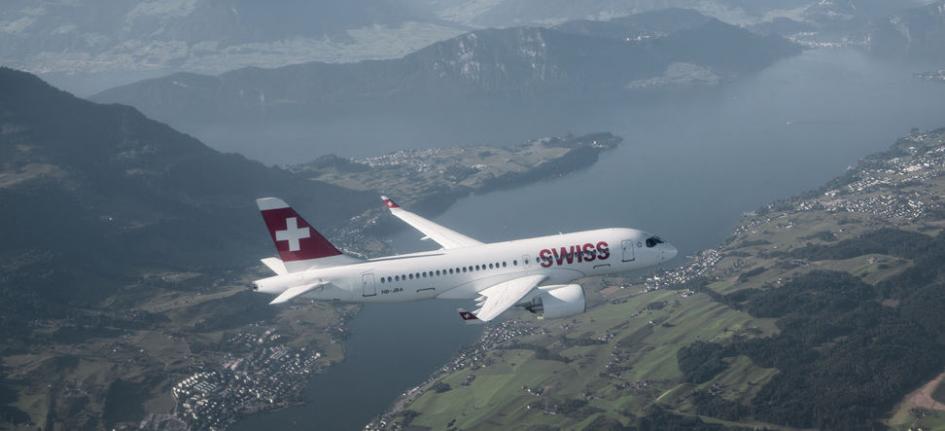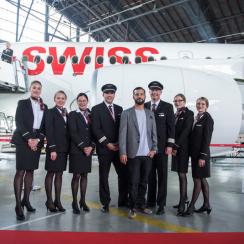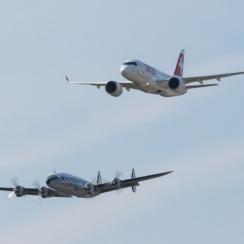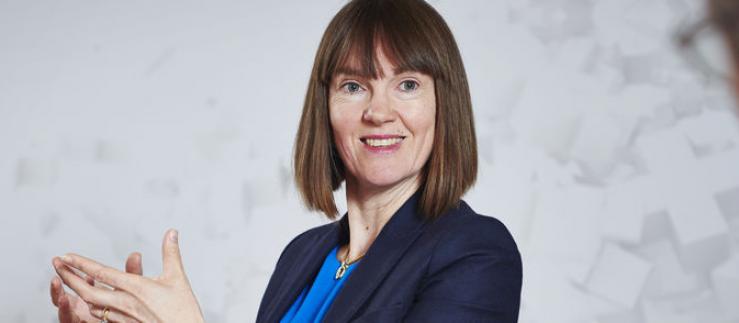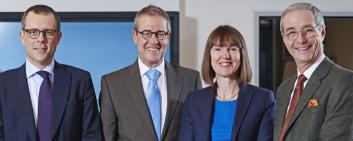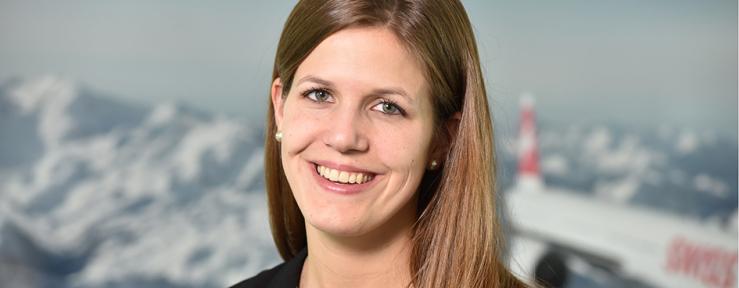Whenever an airline has to replace an aeroplane, it has to address one fundamental question: whether to buy an aeroplane that might be able to be improved selectively, but that despite everything is technologically already old. Or does it opt to purchase an entirely new one, with all the inherent risks that a leap into the unknown can bring with it? When SWISS first started thinking about replacing its Avro RAJ100 fleet (some of the members of which are over 20 years old), it soon became clear that nothing "off the peg" would suit. So the people at SWISS with the responsibility for these matters decided to boldly go.
Complex evaluation
Many points had to be considered when choosing the new aircraft type. How many seats or short-haul aircraft are required in order to provide the required connections, and to optimally fill long-haul flights with transit passengers? Is the new aircraft economical enough to survive in a market where the margins are dropping? Does it meet the latest customer requirements and environmental standards? What is it like to work with the chosen manufacturer? What is the delivery time?
SWISS found the answers with the Canadian manufacturer Bombardier, and ordered 30 of its C Series aircraft, the first ten type CS100s with 125 seats, and the remaining 15 type CS300s with 145 seats. It has not yet been decided whether SWISS will exercise the option to change the last five CS100s to the CS300. For Fleet Chief Peter Koch, the decision to buy the C Series is an investment in the future. "The C Series will guarantee us very high technical standards with regard to usage and maintenance for the next 25 years. Furthermore, the new aircraft will set new standards for economy and ecology in short-haul service."
More than satisfied with the product
SWISS is the world's first operator of the C Series; currently, the first three CS100s are in service. And the figures certainly add up. "The introduction of the CS100 has been worlds better than that of other newly-developed aircraft types such as the Boeing 787 or the Airbus A380. There might be a few teething problems, but that's only to be expected," sums up a happy Peter Koch. "And although the aircraft is still causing a bit of work, it's not causing us any more grey hairs!"
What has been clear from the outset: technologically, the CS100 is completely reliable. And with regard to environmental compatibility, it has enabled the airline to make a quantum leap: fuel consumption is 20% lower, CO2 output 20% lower, and it produces 50% less nitrogen oxide than comparable aircraft. And something that also matters to people who live near the airport: thanks to the noise reduction of 10 to 15 decibels, the CS100 is almost half as loud as other aircraft. Costs per seat are 25% lower, which makes it ideal for operation on the hotly contested European networks.
However, Peter Koch is having a slightly harder time with the current delivery delays, which are due to production bottlenecks being experienced by the engine manufacturer. None the less, SWISS expects to take delivery of all 30 of the ordered aircraft by the end of 2018. The airline will constantly be flying to new destinations with the C Series, with plans to include London City from the first quarter of 2017.
Tailored to customer requirements
Not only is the fleet chief delighted with the new aircraft: the airline's relationship managers are also full of praise. Gregor Koncjlia, Head of Business Sales Switzerland: "This aircraft offers a new and superior flying experience, which makes it the perfect match for the standards of quality to which the brand SWISS is committed. On the European networks, the cabin provides almost the same feeling as on a long-haul aircraft."
Customer feedback confirms the positive feeling. Special praise has been given to the ergonomic seats with noticeably more leg and knee room, and the generous storage space for hand luggage. The large windows that make the cabin look large and spacious were also well received. The new Bombardier aircraft have numerous positive distinguishing features. Koch and Koncjlia are sure of one thing: the C Series definitely has the potential to become the "public's favourite".
Three questions for Peter Koch, Swiss, C Series Fleet Chief:
Mr. Koch, what exactly does a fleet chief do?
He is the personnel manager for all the pilots in a fleet. In the case of the C Series, I shall be the first point of contact for about 350 pilots. The fleet chief is responsible for the initial and further training, the checks, for technical and operational questions, and for issues such as flying procedures.
So it's a full-time job?
Not really; I'll still be operating as a captain 50% of the time.
What has been your best experience as fleet chief so far?
Flying the first CS100 from Montreal to Zurich. That was an experience that got under the skin – probably the highlight of my flying career.
